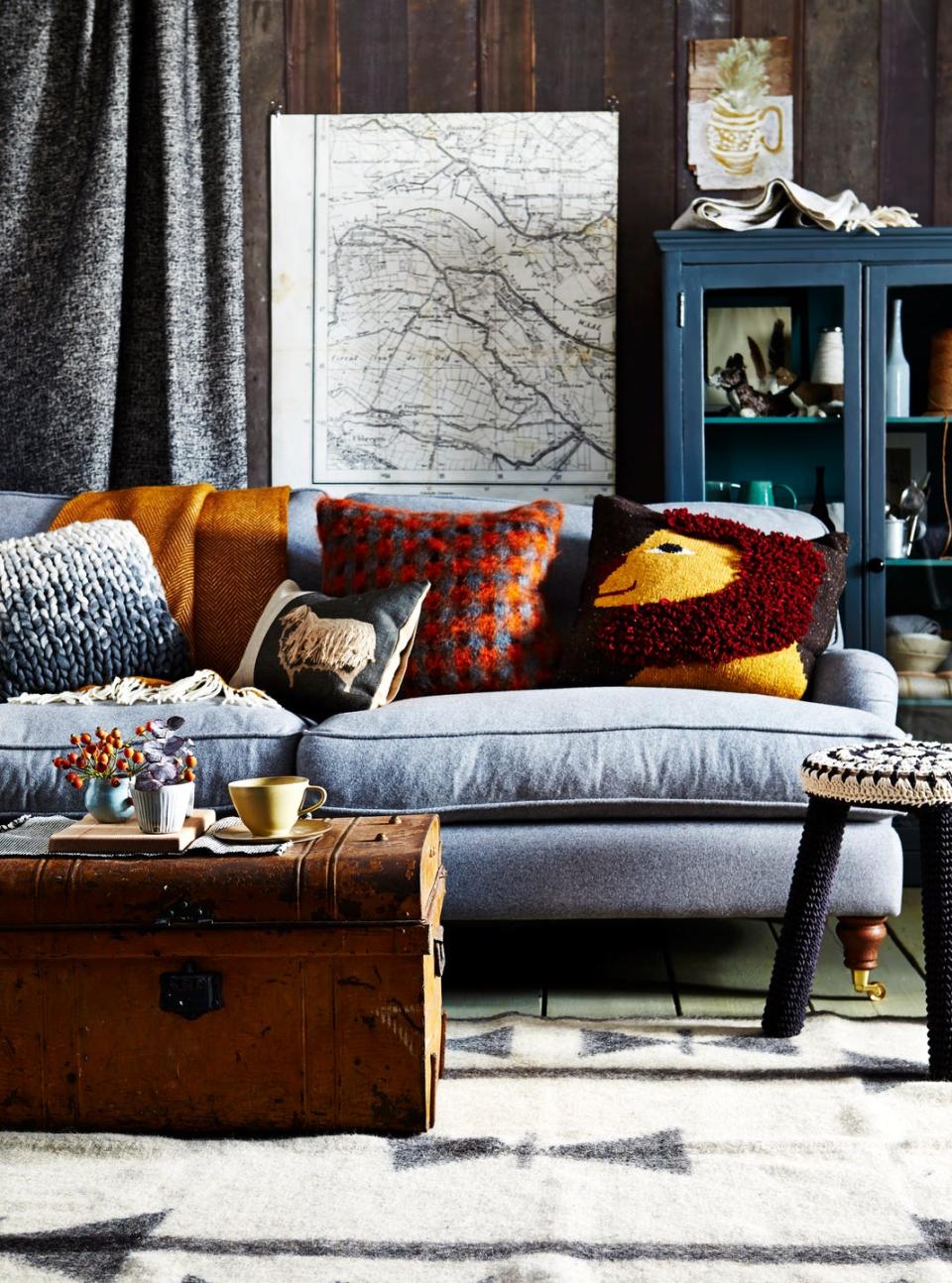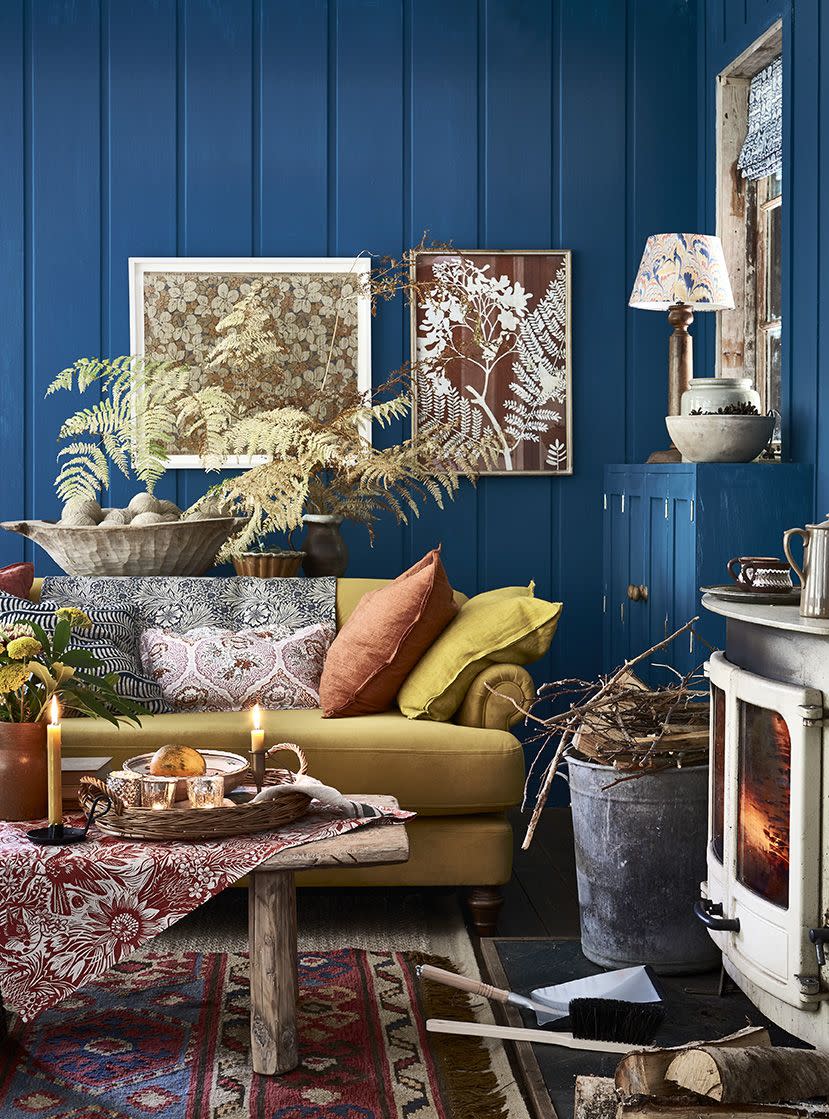Decluttering experts share their 6 favourite methods

There's no one-size-fits-all technique for clearing clutter, and various decluttering methods can help restore order. Whether it's the one-a-day method, decluttering sprints, the 90/90 method, or the popular KonMari method, having a solid strategy will make this sometimes arduous task more manageable.
Decluttering isn't just an essential part of domestic upkeep; it's a cathartic experience. Looking at Marie Kondo's theory around 'joy sparking' objects to the art of Swedish Death Cleaning (more on this below), our mass of possessions can hold a lot of emotional value. Still, a build-up of clutter can result in a chaotic environment — and, even, mind.
"In Sweden, we believe a tidy home equals a tidy mind," Catharina Björkman, interiors expert at Contura, tells Country Living.
"In Scandinavian countries, homes tend to have a pared-back and minimalist décor and utilise storage well. We're also very aware of the positive psychological benefits of a well-ordered home; there's no better feeling than walking into a peaceful, tidy space to feel instantly uplifted."
Helen Sanderson, a professional home organiser, psychotherapist, and author of The Secret Life of Clutter, also echoes this sentiment, telling us: "Clutter can have a huge effect on our mental well-being. Many people feel ashamed that their home is cluttered; it can become a secret. Tackling it can make you feel lighter, in control, and empowered."
We've consulted professional declutterers and interior experts on the methods they use to keep clutter at bay and stay organised — plus a few things to consider before you begin.
The Core 4 method (clear out, categorise, cut and contain)

Susie Boutal is a professional declutterer specialising in helping neurodivergent people combat procrastination and overwhelm to create streamlined spaces that work for them through her company, A Space For Living. She greatly advocates the Core 4 method for a thorough decluttering session.
She explains: "This approach involves 1) clearing out the area you want to use — for example, the drawer, cupboard or desk — then 2) categorising what you have, 3)cutting out the things you don't want (the most important step!), and then 4) containing what you want to keep."
Susie continues: "It's effective because it clears the space first, which is motivating, provides a sense of achievement early on and allows you to envisage what it will look like. Cutting out what you don't want is important before you start putting things back. It's so simple to remember and works for any size project."
The KonMari method
The KonMari Method involves tidying by category (such as books, clothes, or appliances) rather than by room, determining whether to keep items based on an emotional response—things that 'spark joy'. While this decluttering method — popularised by the Netflix show — is rooted in Japanese minimalism, it transcends other cultures and is a core pillar of decluttering theory, according to our experts.
"If you're struggling to decide what items should stay or go, consider whether they bring you joy or conjure a happy memory. If the answer is no, then it needs to go," Catharina Björkman tells us.
Professional declutterer Liz Mansell, who runs home organisation company LM Homesort, agrees with this sentiment, quoting 19th-century artist and designer William Morris as her decluttering inspiration: "Have nothing in your house that you do not know to be useful or believe to be beautiful."
One area at a time

Like the one-a-day method, where you remove one item daily, (ideally by donating it to a loved one or charity shop), professional declutterer Liz Mansell suggests starting small by breaking down decluttering into areas and tackling them in short bursts.
"It's so easy to bite off more than you can chew when it comes to decluttering," she tells Country Living. "By breaking down larger goals and starting one cupboard or drawer at a time, you are more likely to succeed and will relish the sense of accomplishment with each completed step.
"For me, the key areas are the wardrobe, the kitchen draw, or the bathroom cabinets as these are the home areas used daily, without exception. Seeing the benefit of that small area daily can be enough to spur you on to more decluttering. Once you start, decluttering is infectious!"
The gardening method
Professional home organiser and psychotherapist Helen Sanderson suggests being guided by the needs of a garden to declutter effectively. "There are three key stages to unblocking your clutter and unlocking the nurturing power of your home," she tells us. "Wedding, planting and maintenance."
Weeding: "Clutter is decisions that haven't been made," Helen explains. "So the key to decluttering is deciding what to do with it. Go through it all carefully but quickly, identifying the 'weeds' and 'plants' (things you want to keep)."
Planting: "Now choose what you want to focus on, what to give space and light to grow," Helen continues. "Practically, this is deciding what goes where and designing systems supporting them."
Maintaining: Helen concludes: "I encourage people to consider maintaining order in the home as a mindful practice, not a chore, by staying on top of the space. A cluttered home manifests choices that have been postponed or avoided, while a well-maintained space echoes a commitment to your highest values and yourself."
Swedish Death Cleaning
Like the KonMari method, Swedish Death Cleaning looks at our emotional attachment to clutter. "It may sound dramatic, but dö städning, the Swedish concept of 'death cleaning' means thinking about not only how your things make you feel, but also how they might make your loved ones feel once you've passed," Catharina Björkman explains.
"The idea is based on the need to change our approach to accumulating more and more stuff every year and at every stage in life; it's important to remember that memories can be maintained without clinging to hordes of physical things, so the key is to be strict with yourself about what stays."
This could mean thinking more carefully about what you buy. Consider methods such as the organisational triangle that encourage a "something in, something out" mentality before items start to accumulate.
Colour coding

A tidy and well-organised space is part of the fun of decluttering, and interior designer Benji Lewis suggests adding a little interior flair to your organisation.
He says: "Colour code what you own. For example, with books, assemble all the books you own with yellow spines and showcase these together on your bookshelves, then do the same with the books with red spines, then the books with blue spines."
This method also works well with clothes, particularly if you have an exposed rail. Once you've streamlined your items, organising clothes by their colours and shades can be an incredibly satisfying experience.
Preparing to declutter: What to think about before
The right preparation will help your decluttering session run more smoothly. Our decluttering experts suggest:
Block out time for your decluttering session
"Before thinking about decluttering, always make sure you have time set aside to do it properly." Liz Mansell explains that "the most common mistake is making an impromptu start, but not being able to complete it, most likely due to the demands of modern life."
She continues: "This not only leaves you feeling negative about decluttering, but also means you are unlikely to feel inspired about any future decluttering attempts. Block the time out in your diary, like a meeting between you and your mental health, turn your phone on silent, and focus one step at a time."

Invest in storage beforehand
"Storage is your new best friend," Catharina Björkman suggests. "Invest in storage containers for everything you don't want on display; stackable drawers, baskets, boxes, zip bags, vacuum bags. These inexpensive and widely available items will help transform your home."
Liz Mansell adds as the caveat: "I thoroughly recommend drawer dividers and angular baskets, but I avoid curved storage options due to wasted space."
Have a plan of action for getting unwanted items out of the house
There's nothing more satisfying than all that space after a decluttering session, but this can be somewhat marred by bin bags of clothes or boxes that still need to be moved. "Drop your donation pile to the charity shop as soon as possible," Liz Mansell suggests. "The longer it hangs around, the more likely you will question your judgement, and items will sneak back into your house."
You Might Also Like


